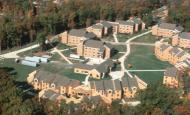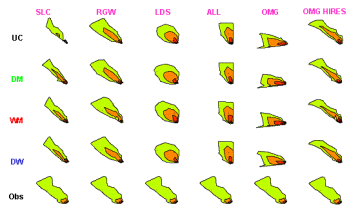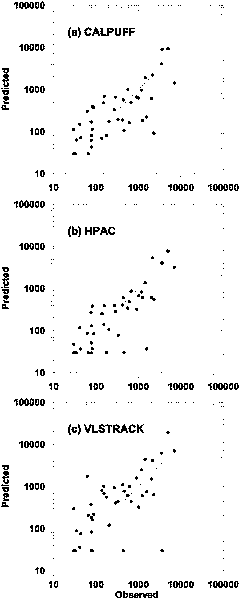
|
|
||||
  School of Computational Sciences CAMP Home People Research Simulation gallery ├ Hurricane predictions ├ Higher-order upwind schemes on unstructured meshes ├ Urban scale simulation └ Advanced statistical methods (neural networks) Publications Resources for students Data archive Annual conference Computing resources Related links About our webpage Contact us |
Independent model validation and verificationGMU CAMP group and IDA have evaluated Urban HPAC model independently. This figure shows comparisons of predicted and observed 2-hour dosages for both Urban HPAC model options, UC (SCIPUFF urban canopy), DM (Urban Dispersion Model), WM (Urban Wind Model), DW (DM+WM) and meteorological input options SLC (SLC airport observations), RGW (Raging Waters site upwind profiles), LDS (observations at the SLC's highest building top), ALL (all available observations), OMG (2-3 km grid resolution OMEGA model simulation), OMG HIRES (1 km OMEGA model simulation) for IOP 10, Release 1.Click on the image for enlarged view (size: 26KB).
In recent years, complex computer models for the simulation of real world systems are used pervasively in scientific research, and there are increasing demands for these models to support policy- and decision-making. As decision and policy makers come to rely increasingly on estimates and simulations produced by these models, in areas of emergency hazard prediction of Chemical, Biological, Nuclear, and Radiological (CBNR) agents, the need for objective and non-partisan evaluation of the accuracy and utility of such models become more urgent and important. The figure shows Dipole Pride 26 (DP26) Instantaneous ground-based point source release comparison with CALPUFF, HPAC, and VLSTRACK.
See the
contact page for detailed
information on
contacting us. |
|||


